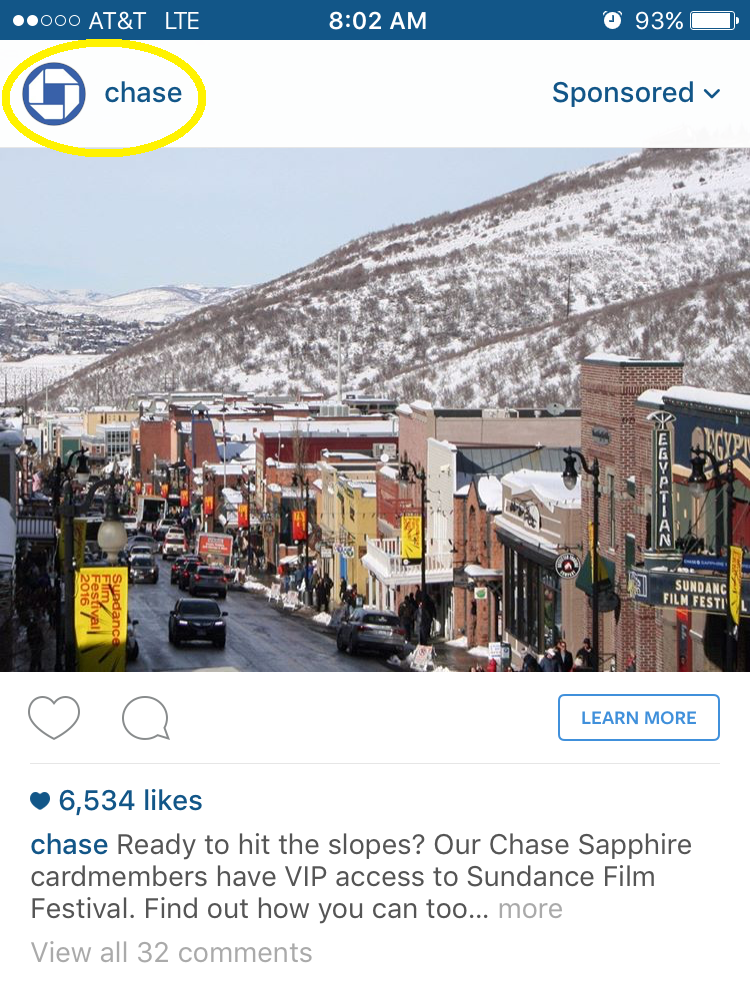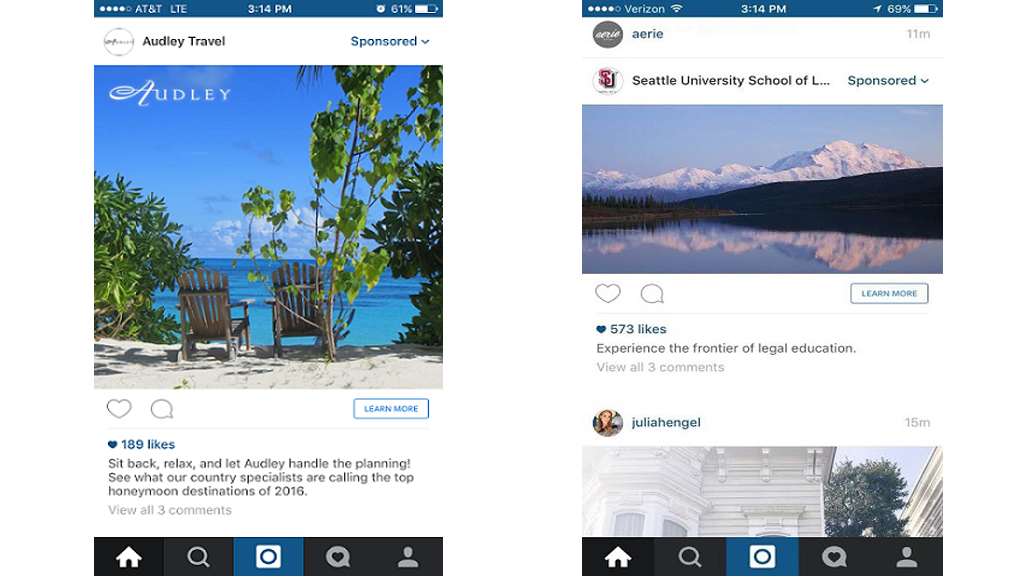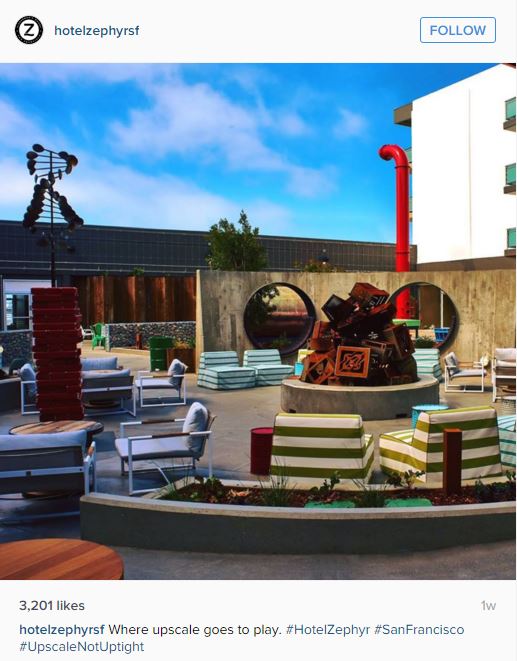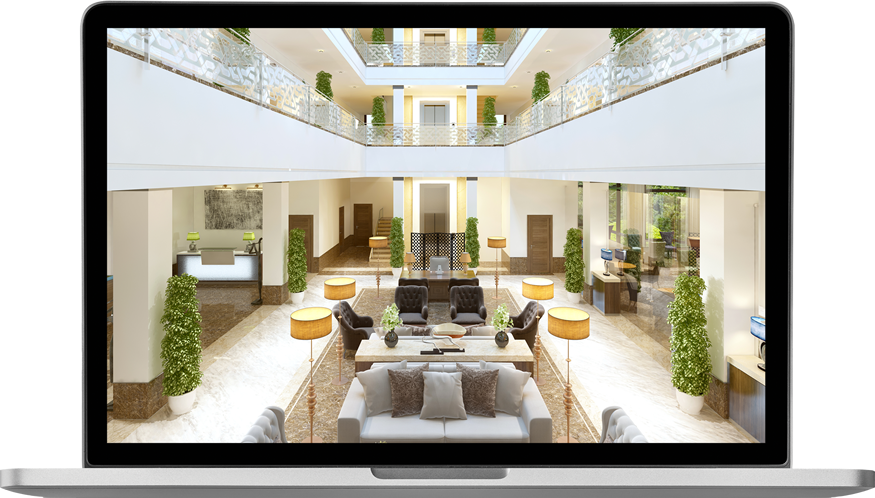Advertising on Instagram has been a hot topic among Blue Magnet Interactive’s clients as well as digital marketing professionals. In true Facebook style, what once was available to a small, select group of advertisers has now been rolled out to advertisers everywhere, so it is inevitable that this has become a popular conversation.
Before we dive into specifics; is important to note that Facebook is Instagram’s parent company and the same advertising rules apply. In fact, Instagram ads are built in Facebook’s Ad Manager (or Power Editor) and can coincide with your Facebook campaigns if you select “Instagram” as one of your ad placements. Other ad placement options include Facebook’s Desktop and Mobile News Feeds, the right column on Facebook’s Desktop News Feed, and Facebook’s Audience Network. This also means that the same targeting options advertisers have on Facebook are available on Instagram including location (down to a user’s zip code), demographics, and interests – to name a few. This data is pulled from apps and third-party sites that users utilize and based on other Page’s/accounts users follow as well as the information and interests they share on Facebook. Therefore, advertisers have a lot of control over their ads’ audiences.
The buzz around Instagram Ads is at its peak; in turn, today we are discussing some of the most frequently asked questions we have received centering this advertising platform.
Do I need an account to advertise on Instagram?
You might be surprised to learn that no, you do not need an Instagram account to run ads on the platform; however, you do, at the very least, need a Facebook Page. While having an Instagram account is not a requirement, it is highly recommended. If you decide to run an ad – sans Instagram – through your Facebook Page, you will not be able to respond to any comments left on your ad. Your “Instagram handle” will be your Page’s name and it will be grayed out (meaning users will not be able to click on it like they would an actual Instagram handle). If your Page name exceeds the character limit for Instagram handles, it will be cut short with “…”
What advertising objectives should my hotel take advantage of?
Whether you are looking to increase brand awareness or drive website traffic, similar to Facebook, there are a variety of objectives to chose from. Before embarking on your targeting strategy and creatives, ask yourself what you want to accomplish; then select from the following:
- Page Post Engagement: Choose this objective to enhance engagement (comments and likes) on your ads. By boosting your posts, you will be able to efficiently get your message in front of your target audience.
- Clicks to Website: Drive quality traffic to a specific page of your website. This is especially a unique opportunity because Instagram posts do not have a place for clickable links. Essentially, even if you have an Instagram account, this is the only way to include a clickable URL within your post. If you are looking to drive traffic to your hotel’s website, you can choose the “Clicks to Website” objective and a call-to-action button will be added to the bottom right corner of your ad.
- Website Conversions:These are used to increase conversion on your hotel’s website (for example, a conversion might be a user booking a room or filling out a request for proposal). In order to take advantage of this objective, your hotel will need to add a Facebook pixel on its website before creating the ad, meaning you will need access to your site’s back end.
Other objectives that are available include Mobile App Installs, Mobile App Engagement, and Video Views.
What will my Instagram ads look like?
Instagram ads will show up in a user’s Instagram feed, as shown in the example below. This particular ad has been optimized for website clicks since there is a call to action to “Learn More” at the bottom right of the photo. You can click on the handle (circled in yellow below) because Chase actually has an Instagram account.

If you choose Instagram as a placement for your ad without an Instagram account, your ad will look like either of the below. The fake “handles” are grayed out and not clickable in both ads. Note: In the example on the right hand side, Seattle University’s “handle” is cut off because the Facebook Page title exceeds Instagram’s handle character allotment. This is one of the many reasons Blue Magnet recommends advertising on Instagram via your Instagram account.

The example below is of an ad where the objective is to increase engagement. Note: There are all no call-to-actions in this example. The purpose of this particular ad was to drive brand awareness.

How much money do I need to spend?
I do not care who you are talking to, there is no “right” answer to this question. At Blue Magnet, we have seen successful campaigns with even the smallest of budgets – as little as twenty-five dollars. Facebook requires that your minimum daily budget is $1.00 USD and at least two times your cost per click (CPC) if you choose automatic bidding, five times your CPC is you are manually bidding. With that being said, here are a few questions to ask yourself when determining budget:
- Estimated Audience Size: Is your hotel looking to target moms within ten miles of your property for an Easter brunch or are you looking to target business travelers in the United States who have an affinity for your brand? The bigger your reach, the higher the budget you may want to consider.
- Length of Campaign: This might come as a no-brainer, but the longer the campaign is running, the higher your budget should be. If your hotel’s targeting strategy involves remarketing (for example, you want your Facebook campaign to show to people who recently visited your website), you will want to make sure your campaign runs long enough to capture cookies from your website visitors.
- Seasonality:Bidding can be higher or lower during any given time period depending on your strategy, the time of year, and your target market. For example, are you targeting users who are interested in the NFL and football because the Super Bowl is in your city this year? It is likely that there are plenty of other people implementing that same strategy to their campaigns, causing the cost per click or engagement to be higher than it might be normally.
- Your Goals: The most important item to consider when setting a budget is, ultimately, what do you want to get out the campaign? If you are looking to increase website traffic by a specific percentage, you will want to factor those end results into your overall budget strategy.
What type of return on investment can I expect?
The age old topic of ROI… Often times, it is a challenge to attribute exact return on investment from social media efforts, but there is always a way to determine a way to report on results. With Facebook’s Ad platform, there are a number of metrics we can report on after (and during the duration of) the campaign. Depending on your ad objective, determining the ROI may be more (or less) straightforward. For example, if the objective is “Post Promotion,” determining your return based off the number of likes and comments is going to be an estimate. For example, “If one out of every 10,000 people reach booked a two-night stay at the lowest average daily rate, then…,” or you might base ROI off of general sentiment – were users’ overall reaction to the post positive? With objectives such as website clicks and conversions, determining exact return on investment will be more direct.
When we run a campaign we want to know the results were well worth our investment. The bottom line is there are many ways to calculate performance depending on your goals, objectives, and the tracking your advertiser is able to implement. By creating strong, targeted audiences and relevant, creative messages, we can get your hotel’s message in front of exactly the right people at exactly the right time.
Bonus Question: How can I grow my account’s audience without ads?
Instagram said it best, “The best way to grow and strengthen your audience is to create high quality, on-brand content that people want to see in their Instagram feed.” At Blue Magnet, we could not agree more. Creating strong, relevant content is the key to success on all social media networks and will maximize your chances of being discovered organically. Instagram also suggests making social part of your day-to-day marketing initiatives. It is also an excellent idea to post signs, table tents, and the like on-property so guests know where they can find your property online. Include your handles and URLs on any and all marketing collateral, including your team’s email signatures and handouts and cross promote your accounts across networks.
Ready, set… invest? Not so fast.
Before diving into any opportunity, it is important to stop and ask yourself, “Why am I doing this?” If your answer is, “Because everyone else is doing it,” that is not good enough. Before you embark on any new digital marketing adventure, write down your hotel’s goals. Think about your target market and research where they are spending their time. Consider your hotel’s budget, what metrics are most important to your team, and the amount of money (and time) you are willing to invest.
Advertising on social media has its advantages when you have done your research and set solid goals in place beforehand. If you do not have the time, money, or, most importantly, photography to advertise on Instagram, there are always other options that might fit your needs such as PPC or Facebook or Twitter Ads.
Next month, we will be discussing how to choose the right social media channels for your hotel.
Sign up for our email newsletter below and do not miss out on any of our informative blog posts about social media. Contact Us to discuss how Blue Magnet can help you with your hotel social media.




